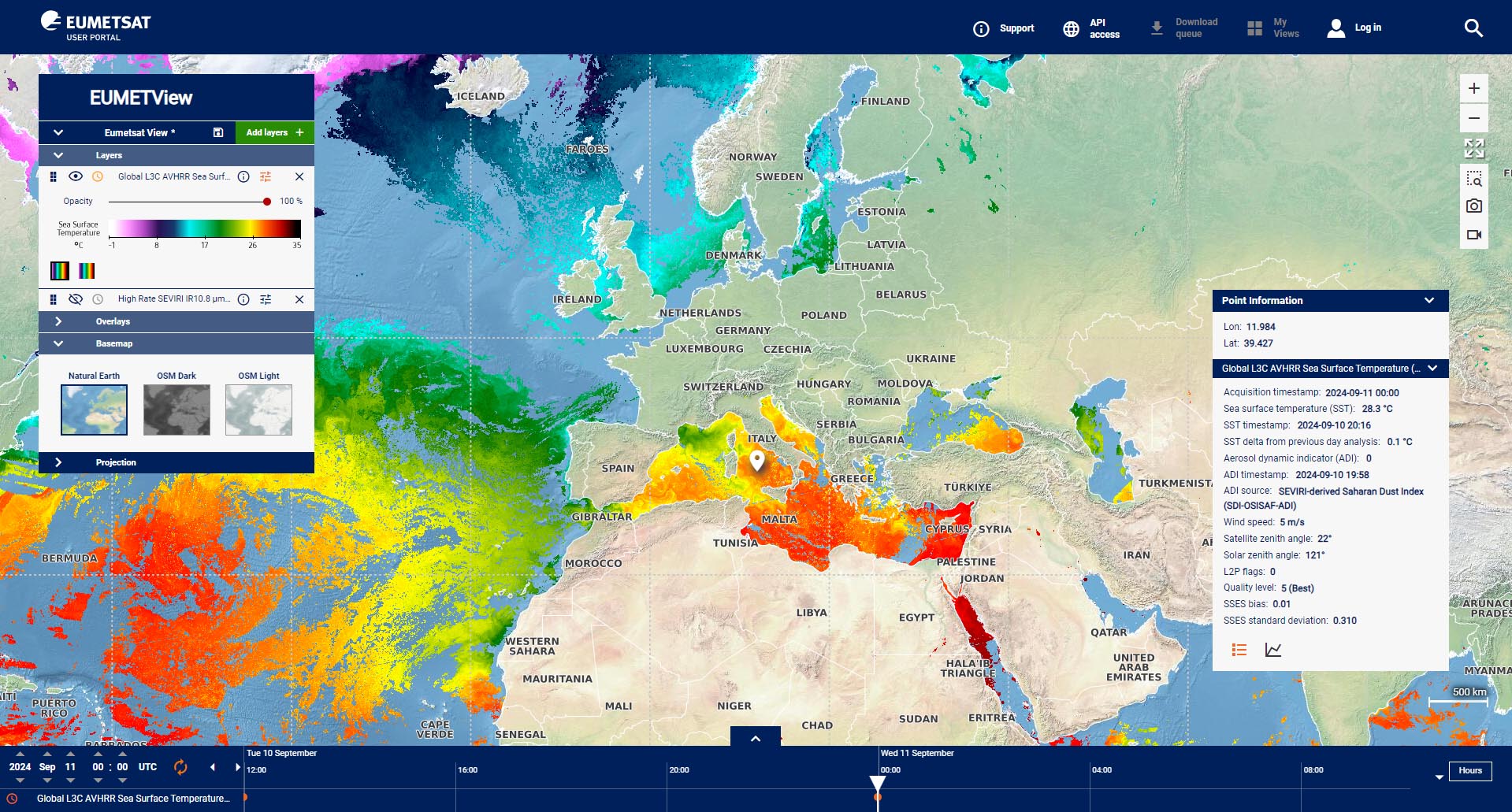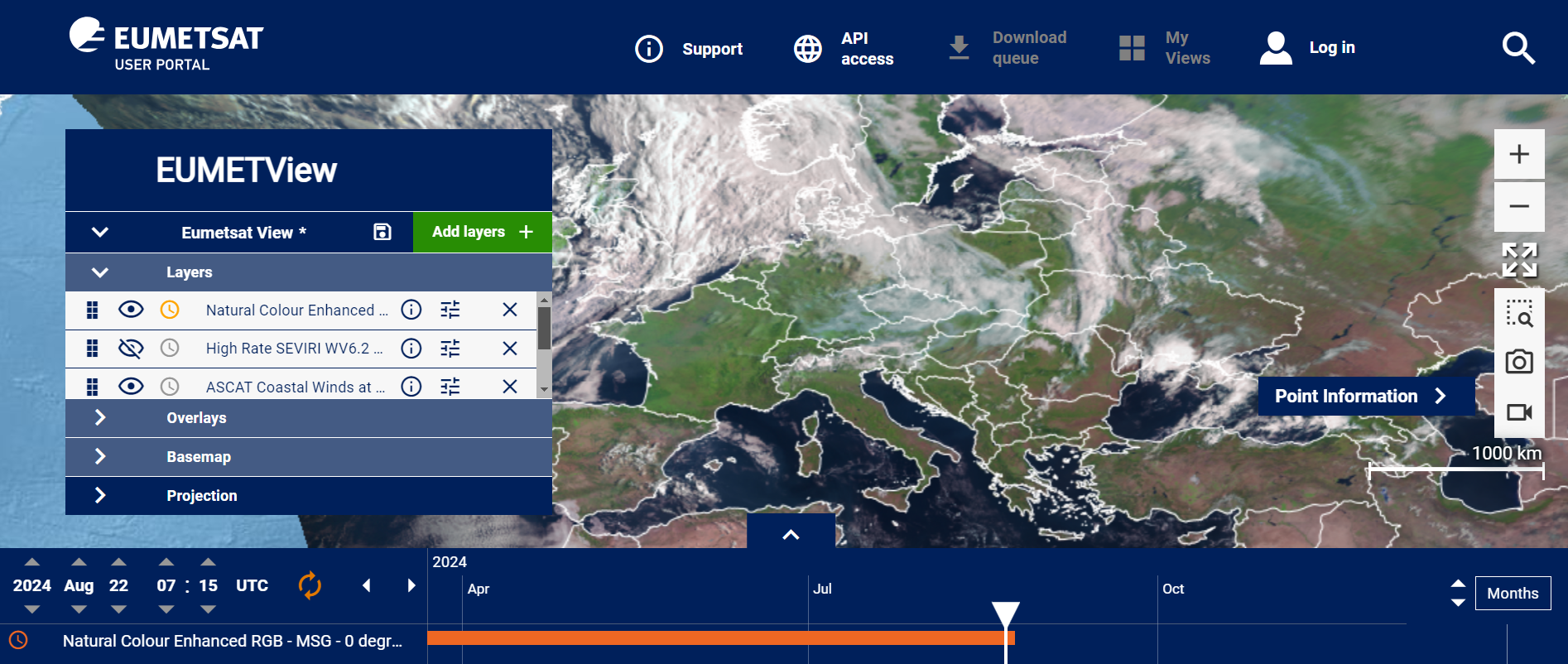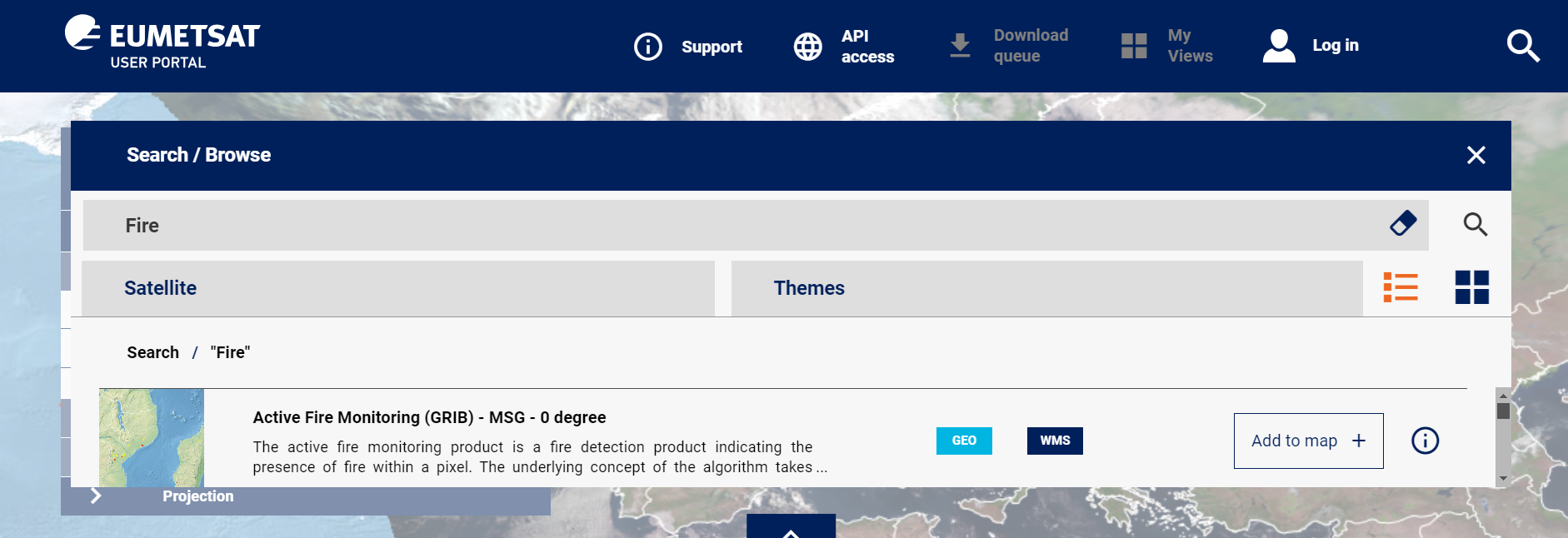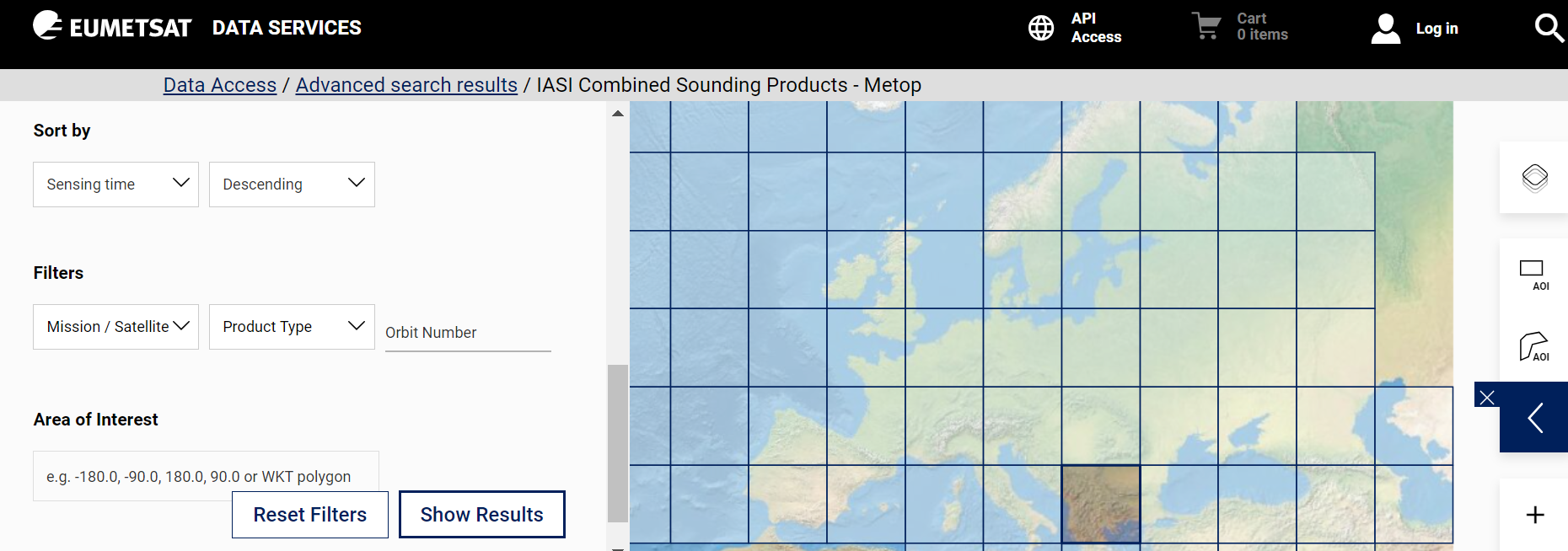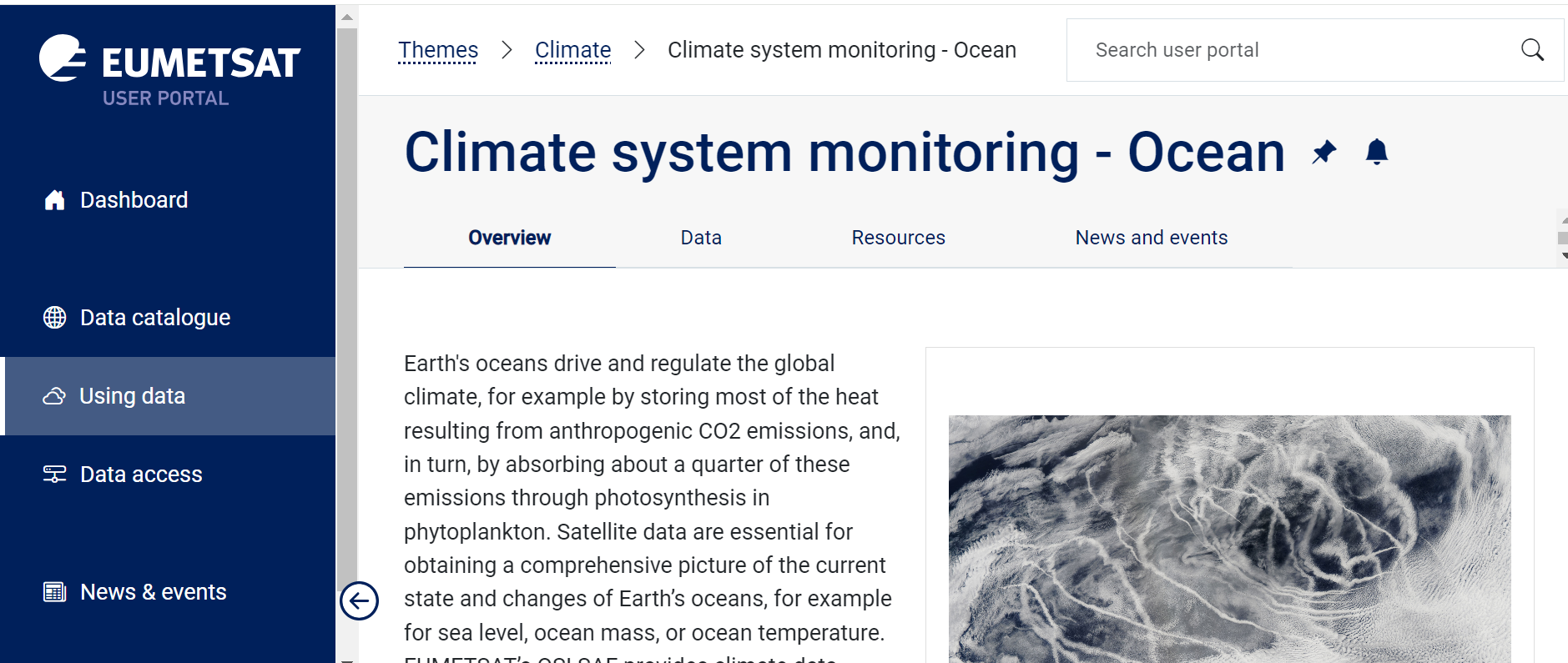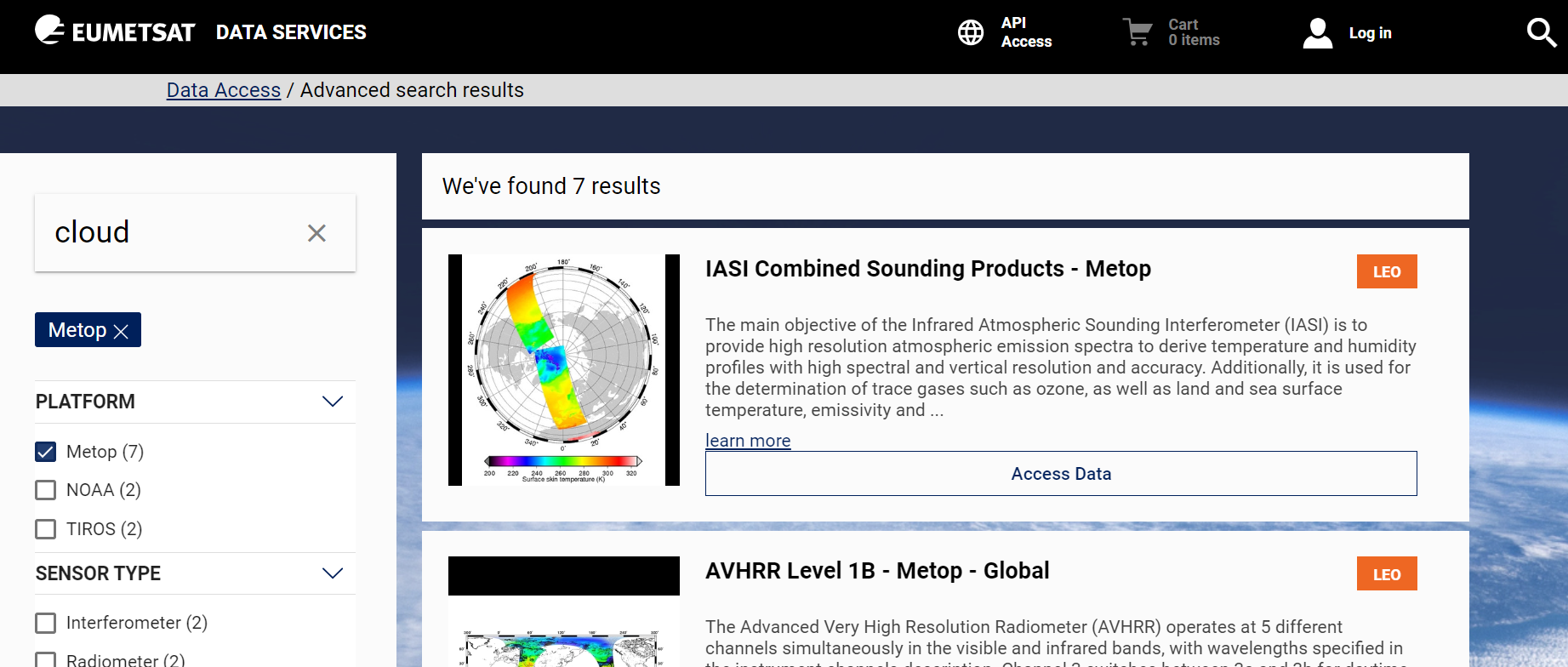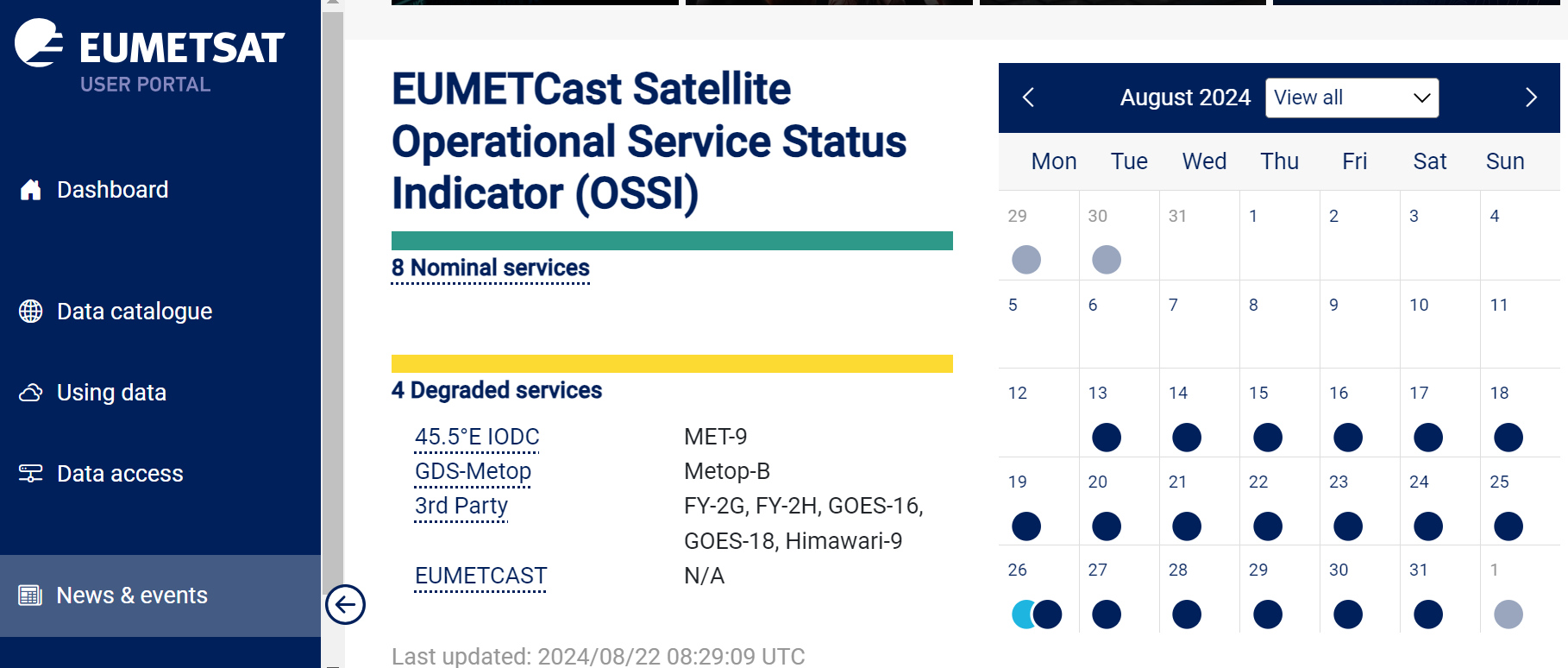
The view from space
The new EUMETSAT User Portal
The European Organisation for the Exploitation of Meteorological Satellites (EUMETSAT) plays a key role in monitoring weather and climate from space. It is one of the main partners in the European Union's Copernicus Earth observation programme and in the EU's Destination Earth initiative to develop a digital twin of the Earth for modelling, monitoring and simulating natural phenomena, hazards and related human activities. EUMETSAT also cooperates internationally with organisations such as NASA, NOAA and the French space agency CNES.
EUMETSAT provides its 30 member states with comprehensive meteorological images and data, which make a significant contribution to the safety of the people living there and serve to protect critical economic sectors.
Long-term and short-term data for climate research
The EUMETSAT archive comprises over 40 years of satellite observations. This long-term data is invaluable to climate researchers worldwide for monitoring climate change. In addition, short-term observation data is available in cloud-based systems such as the EUMETSAT Data Lake (EDL) and the Online Data Store. The satellite data covers topics such as weather, climate, atmospheric composition, ocean observation and natural disasters.
The new EUMETSAT User Portal
In 2024, EUMETSAT launched the new EUMETSAT User Portal (EUP), developed by con terra together with 52°North and CGI Germany, which revolutionises access to this valuable data. The portal provides a harmonised and improved service for exploring, accessing and supporting satellite data services. New features of the portal include:
- One-stop-shop solution
- Modern user interface: A flexible interface that integrates the EUMETSAT web design and uses standardised terminology.
- APIs for interoperability: Interfaces that enable seamless navigation and integration with other EUMETSAT applications.
- Integrated service: A centralised service for data search and exploration, data access and user support that replaces a multitude of heterogeneous applications.
Overview EUMETSAT User Portal
The new EUMETSAT User Portal integrates numerous content services in an intuitive user interface supported by a flexible dashboard. This utilises existing components such as content cards and calendar widgets. Below is an overview:
User Services Client (USC):
- Product search and ordering tool for archived earth observation data (EO data).
- Enables temporal, spatial and attributive filtering.
- Monitoring of order status and direct download of completed orders.
Data Center (UMARF):
- Long-term archive service for EO data.
- USC obtains data from this archive.
EUMETCast Admin Tool (EAT):
- Management of subscriptions for EUMETCast services.
- Activation, updating and ordering of electronic keys to obtain the data.
- Standardised presentation of services in the User Portal.
User Messaging System (UMS):
- Storage and display of service status information and announcements.
- E-mail notifications for subscribed users about service changes.
Data Store:
- Central online hub for accessing current meteorological data.
- Public interface (API and UI) to the EUMETSAT Data Lake.
EUMETSAT Data Lake (EDL):
- ‘Back-end’ of the data store with access to metadata and data.
- Management of data in a cloud storage system.
EUMETView:
- Web service for displaying, animating and downloading images of EUMETSAT missions.
WebSite4:
- Official EUMETSAT website.
Helpdesk (Jira):
- Management and processing of user requests.
- Support for report generation.
Architecture and technology
The portal is based on REST interfaces that separate the user interface (UI) from the backend functionality, which facilitates development and maintenance. It uses the Quarkus framework for cloud-native Java applications and splits its functionalities into separate, easily updatable modules.
The Strapi content management system enables horizontal scaling and flexible configuration. The single sign-on (SSO) is cluster-capable and supports customisation via standard Spring Boot approaches as well as older authentication protocols such as CAS.
For metadata management, the portal uses a JSON-based format that simplifies the management and extension of product metadata. Interfaces such as CSW, OpenSearch and OAI-PMH ensure interoperable access, and schema.org definitions improve findability in search engines.
Conclusion
The EUMETSAT User Portal represents a significant advance in the provision and use of meteorological satellite data. It offers scientists, researchers and interested parties user-friendly and efficient access to a wide range of data and services. This supports not only weather forecasting and climate research, but also the protection of the environment and the economy in the EUMETSAT member states and beyond.
